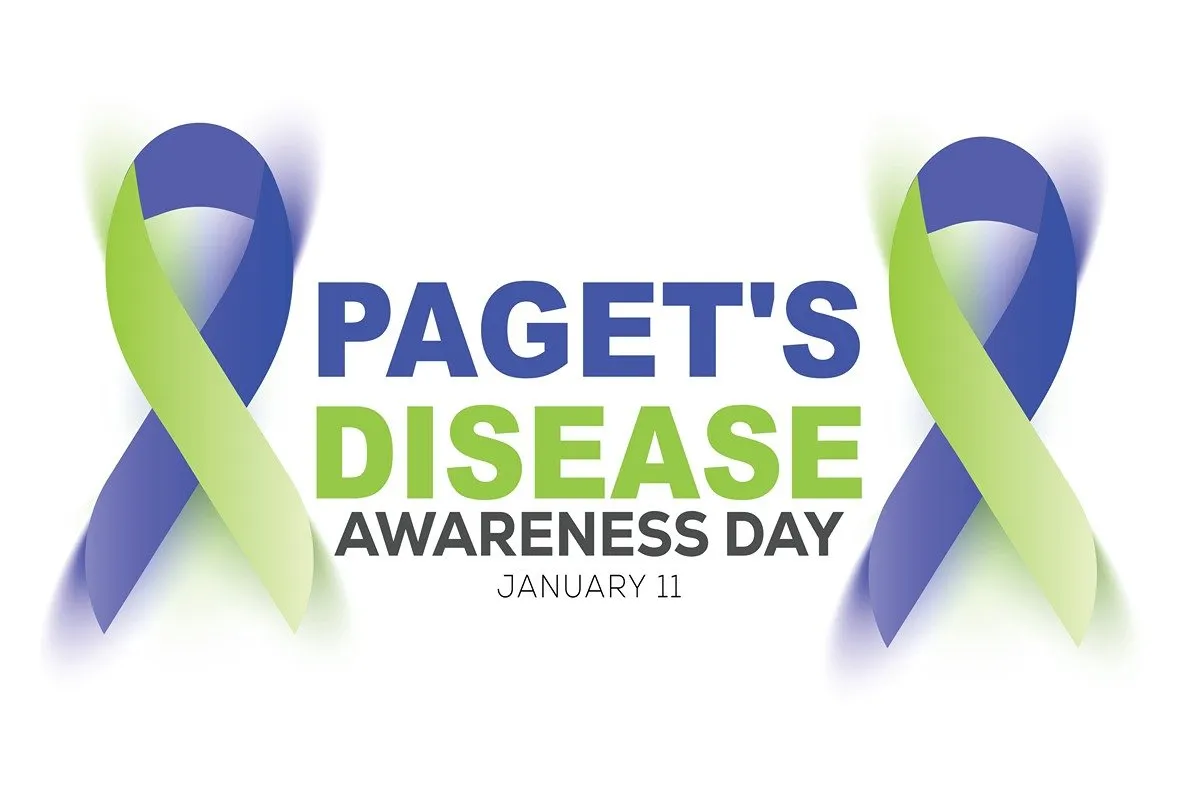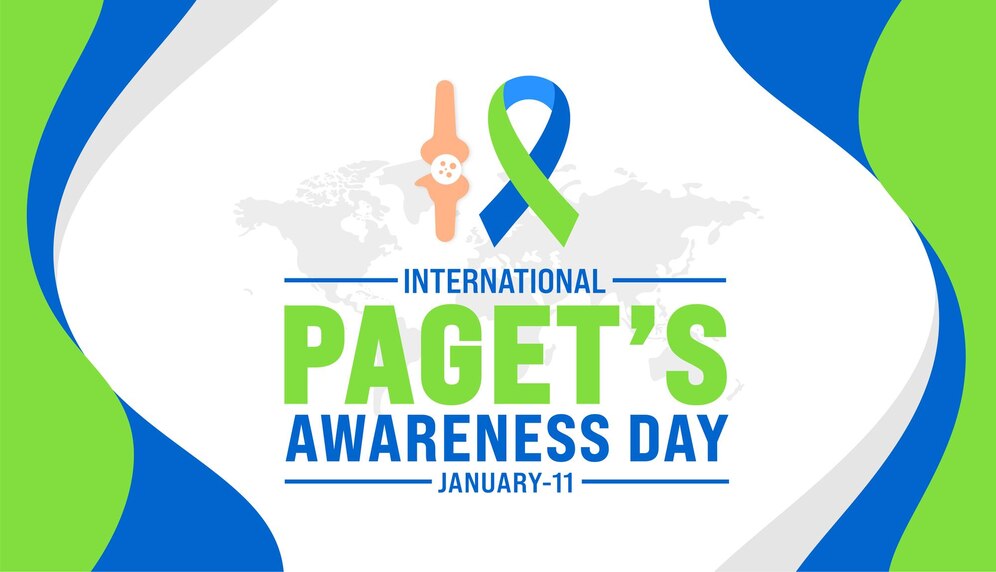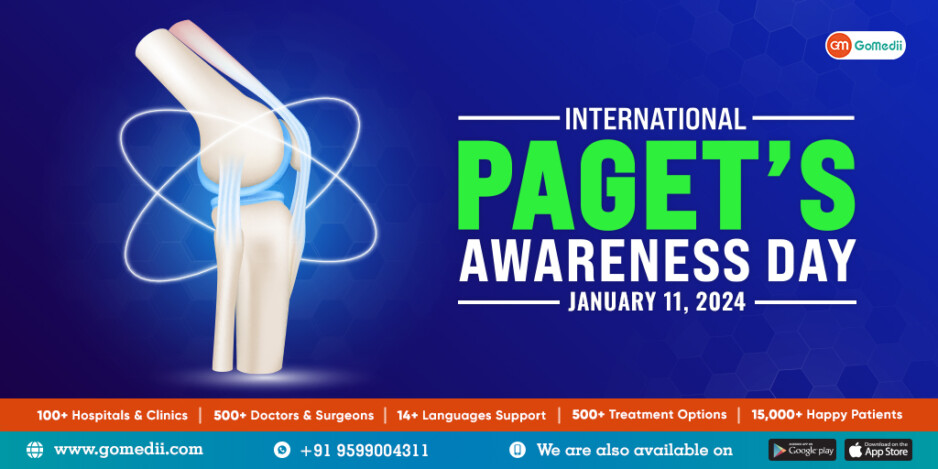Overview of Paget’s Awareness Day
Paget’s Awareness Day holds a significant place in the calendar for many individuals and families affected by Paget’s Disease of Bone. This day provides a platform to shine a light on a condition that is often overlooked. Awareness is key, and the day’s activities are crafted to engage communities, patients, and healthcare professionals alike in meaningful discussions and educational efforts.
History and Significance
The history of Paget’s Awareness Day can be traced back to the initiative of patient advocate groups, who recognized the sheer necessity of spreading knowledge about Paget’s Disease. This rare bone disorder affects approximately 1% of adults, primarily those over age 50, and yet many remain unaware of its impacts.
Over the years, Paget’s Awareness Day has gained traction, becoming a focal point for education and support. Events are held globally, from local seminars to online awareness campaigns, providing resources and information for patients, their families, and healthcare providers.
Significance of the Day:
- Community Engagement: Events bring together diverse individuals, fostering a sense of community among those affected by the disease.
- Educational Outreach: The day provides an opportunity to educate the public about the symptoms, treatments, and living with Paget’s Disease.
- Advocacy: It helps reinforce the need for further research and funding while advocating for patient rights and awareness.
Many individuals share their personal journeys, revealing how they navigated the challenges of a diagnosis that often comes with significant emotional and physical burdens. For example, a patient named Sarah recounts how participation in Paget’s Awareness Day events empowered her to connect with others facing similar hurdles, turning her feelings of isolation into a shared message of hope and resilience.
Purpose of the Awareness Day
The purpose of Paget’s Awareness Day is multi-faceted. It’s not merely about recognition; it’s a call to action aimed at improving the lives of those affected by the disease. Here are some of the primary objectives:
- Increasing Public Awareness: One of the key goals is to familiarize the public with the disease so that early diagnosis and treatment can become more commonplace.
- Providing Support: The day aims to connect those diagnosed with Paget’s Disease to resources, information, and support groups, helping them manage their condition more effectively.
- Encouraging Research: By promoting awareness, the initiative seeks to inspire more investment in medical research to advance understanding and treatment options for Paget’s Disease.
Through various campaigns, participants are invited to share their stories on social media, attend discussions with experts, and engage in community events. Utilizing hashtags like #PagetsAwarenessDay enables advocates and patients to reach a broader audience, emphasizing the importance of collective action in raising awareness.
Activities on Paget’s Awareness Day include:
- Health Fairs: Events that offer free screenings and information about bone health.
- Social Media Campaigns: Encouraging the public to share educational resources and personal experiences.
- Workshops and Webinars: Focusing on coping strategies, treatment options, and the importance of community support.
As individuals come together to celebrate Paget’s Awareness Day, they not only honor their personal journeys but also contribute to a larger movement aiming to transform the landscape of healthcare for those impacted by this often-misunderstood condition.
In essence, Paget’s Awareness Day is more than a day on the calendar; it represents hope, solidarity, and a commitment to foster understanding and support for years to come. It serves as a potent reminder that every effort made to spread awareness matters, impacting lives in profound ways.

Understanding Paget’s Disease of Bone
Having established the significance of Paget’s Awareness Day, it’s essential to delve into understanding Paget’s Disease of Bone itself. This complex condition warrants attention not only for its physical impacts on individuals but also for the broader implications it has on their quality of life. By grasping the causes, risk factors, symptoms, and diagnostic methods, we can better support those affected.
Causes and Risk Factors
Paget’s Disease of Bone is characterized by the abnormal remodeling of bone, leading to enlarged and weakened bones. While the exact cause remains elusive, several factors may contribute to its development.
Potential Causes:
- Genetic Factors: Research has indicated that Paget’s Disease may run in families. If someone has a family history of the disease, their risk can be higher. Genetic mutations related to the disease have been noted, and it’s an area of ongoing research.
- Environmental Triggers: Some studies suggest that environmental factors—such as exposure to certain viruses or high levels of calcium—might play a role in development.
Risk Factors:
- Age: The disease is most commonly diagnosed in individuals over the age of 50.
- Gender: Men are generally more prone to Paget’s Disease than women.
- Ethnicity: Those of European descent are more frequently affected compared to other racial or ethnic groups.
- Geographic Location: Studies have indicated that Paget’s Disease is more prevalent in certain regions, particularly in countries like the UK, Canada, and Australia.
Understanding these factors can help individuals recognize their potential risks. For example, a man in his late fifties named Tom reflects on learning about his family’s history of Paget’s Disease. His grandfather had been diagnosed, prompting him to be proactive about monitoring his bone health.
Symptoms and Diagnosis
Recognizing the symptoms of Paget’s Disease is crucial for early intervention and effective management. The disease often advances without noticeable symptoms in its initial stages, which can make diagnosis challenging.
Common Symptoms:
- Bone Pain: This is the most frequent symptom, often described as a dull ache in affected bones.
- Deformities: Abnormal bone growth may lead to visible physical changes, such as bowing of the legs or enlarged skull.
- Fractures: Weakened bones can lead to fractures, even with minimal trauma.
- Hearing Loss: If the skull is involved, it may affect the inner ear and cause hearing issues.
Despite these symptoms, many individuals may be unaware they have Paget’s Disease until diagnosed during imaging tests for unrelated issues.
Diagnosis Process:
The diagnosis of Paget’s Disease typically involves a combination of:
- Medical History Review: Doctors will discuss symptom history and any familial predisposition.
- Physical Examination: A thorough physical assessment helps identify any visible symptoms or bone deformities.
- Imaging Tests: X-rays or bone scans can highlight areas of abnormal bone density or reshaping.
- Blood Tests: Elevated levels of alkaline phosphatase in the blood often indicate increased bone turnover, a marker commonly associated with Paget’s Disease.
For instance, Lisa, a healthcare provider, recounts a patient who presented with persistent joint pain but was ultimately diagnosed with Paget’s after a comprehensive workup. Early diagnosis allowed for a tailored treatment plan, significantly improving her quality of life.
In summary, understanding Paget’s Disease involves recognizing its potential causes, identifying risk factors, and being vigilant about symptoms. The diagnosis can significantly impact treatment options, providing pathways towards better bone health. As awareness grows, so does the hope for enhanced outcomes for individuals affected by this condition.

Impact on Individuals and Communities
Having explored the intricacies of Paget’s Disease of Bone, it becomes paramount to examine how this condition affects both individuals and communities. The consequences of living with Paget’s Disease manifest in various ways, significantly influencing the quality of life and social dynamics.
Effects on Quality of Life
Living with Paget’s Disease can profoundly alter an individual’s daily life, often leading to physical, emotional, and social challenges. Patients may find themselves navigating a landscape filled with unexpected obstacles.
Physical Effects:
- Chronic Pain: Many individuals experience persistent bone pain, which can hinder daily activities and contribute to feelings of frustration and helplessness.
- Mobility Issues: As bones become weakened or deformed, mobility can be compromised. For example, someone like David might struggle with tasks as simple as climbing stairs or walking long distances—a real challenge for an active retiree.
- Fractures and Injuries: Weaker bones increase the risk of fractures, which can lead to additional pain and prolonged recovery times.
Emotional and Social Effects:
- Mental Health Struggles: The emotional burden of dealing with a chronic condition can lead to anxiety or depression. Patients may feel isolated, fearing they will not be understood by friends or family.
- Social Withdrawal: Activities that were once enjoyed, like going out with friends, may become less frequent due to mobility restrictions or fear of injury, leading to social isolation.
Take, for instance, Karen, a former avid hiker. After being diagnosed with Paget’s Disease, she found her beloved outdoor adventures coming to a halt. This not only affected her physically but also extended to her mental and emotional wellbeing, as she missed the camaraderie and joy of being in nature.
In acknowledging these impacts, it becomes clear that the ripple effects extend not only to individuals but to families, friends, and the community at large. The strain of caregiving and the need for support networks also becomes apparent.
Support and Resources for Patients
Recognizing the substantial impact of Paget’s Disease on individuals’ lives underscores the critical importance of accessing appropriate support and resources. Awareness is only the first step toward building a community for those affected.
Available Support Resources:
- Support Groups: Many local and online support groups provide an essential platform where individuals can share experiences, offer encouragement, and gain insights from others walking similar paths.
- Educational Resources: Organizations dedicated to bone health often provide valuable literature and website resources detailing treatment options, lifestyle changes, and coping strategies. For example, the Paget’s Foundation offers a wealth of information for patients and caregivers alike.
- Healthcare Teams: Engaging with a multidisciplinary healthcare team, including endocrinologists, physiatrists, and physical therapists, can help create a personalized care plan that addresses individual needs.
Ways to Get Involved:
- Participate in Awareness Events: Joining in on Paget’s Awareness Day events, such as community runs or informational sessions, can promote a sense of belonging and empowerment.
- Advocacy: Becoming involved in advocacy efforts to promote research and awareness can turn personal experiences into impactful action.
An example of effective support is illustrated by James, who found solace in a local support group. By connecting with others facing similar challenges, he not only gained valuable advice but also forged lasting friendships that helped him navigate the ups and downs of managing Paget’s Disease.
In conclusion, the impact of Paget’s Disease on quality of life is profound and multifaceted. However, the available support resources and the communal spirit that often accompanies awareness initiatives can significantly improve the experiences of those affected. As the conversation around Paget’s Disease continues, it cultivates a community of empathy, understanding, and support—an essential foundation for the journey ahead.

Promoting Awareness and Education
As we continue to unravel the profound impact of Paget’s Disease on individuals and communities, it becomes essential to focus on the role of awareness and education. These two pillars are critical in fostering understanding, facilitating early diagnosis, and providing the necessary resources for those affected by the condition.
Campaigns and Initiatives
Over the years, numerous campaigns and initiatives have emerged, aiming to increase awareness about Paget’s Disease of Bone. Such efforts play a vital role in educating the public, healthcare professionals, and patients themselves about the realities of living with this condition.
Key Campaigns:
- Paget’s Awareness Day: As previously discussed, this annual event serves as a flagship initiative where communities come together to raise awareness, share experiences, and promote knowledge about Paget’s Disease.
- Social Media Campaigns: Leveraging platforms like Facebook, Twitter, and Instagram, advocates share patients’ stories, educational posts, and informative graphics. Using hashtags such as #PagetsDisease and #AwarenessMatters helps amplify voices and build a community. For instance, Maria, a participant in the recent social media campaign, tweeted about her journey and received overwhelming support which motivated her to speak publicly about her experience.
- Public Health Workshops: Some organizations host workshops that educate both patients and healthcare providers. These often include presentations from experts followed by Q&A sessions, making information accessible and interactive.
- Collaborations with Businesses: Local businesses often partner with health organizations to raise funds and awareness during specific months. For example, a local gym may host fitness classes where proceeds go toward Paget’s research, encouraging community participation.
Community Engagement:
Engaging local communities is crucial for these campaigns to thrive. Hosting events in community centers or schools can break down barriers, allowing people to learn in a relaxed environment. Family members, in particular, can benefit from understanding the disease better, thereby supporting their loved ones more effectively.
Role of Healthcare Professionals
Healthcare professionals are at the forefront of promoting awareness, education, and support for Paget’s Disease. Their engagement is essential for both patient management and community health advocacy.
Educating Patients:
- Initial Consultations: During first visits, healthcare providers can take the opportunity to explain the condition thoroughly, addressing any misconceptions or fears patients may have.
- Ongoing Education: Regular follow-up appointments are vital for reinforcing information and providing updates on new research or treatment options. For instance, Dr. Smith, an endocrinologist, recalls a patient who was unaware of the latest medication options. After discussing it during a consultation, the patient felt empowered to make informed choices.
Advocacy in the Community:
- Contributing to Research: Healthcare professionals often serve as researchers themselves, driving studies that seek to improve treatment and understanding of Paget’s Disease. Their findings can directly impact patient care and public knowledge.
- Public Speaking: Many professionals engage in public talks or seminars, often organized in collaboration with patient advocacy groups. By sharing their expertise, they contribute to a better understanding of the disease, answering questions, and demystifying the diagnosis process.
Creating a Supportive Environment:
- Empathy and Understanding: Health professionals are encouraged to practice empathy when dealing with patients facing the realities of living with a chronic condition. A compassionate approach can make a world of difference; Jenny, a nurse, shares that simply listening to her patients has helped them feel less isolated and more understood.
- Encouraging Peer Support: Healthcare professionals can also promote the idea of connecting patients with support groups or community forums, enhancing the support network available to them.
In conclusion, promoting awareness and education around Paget’s Disease involves a multifaceted approach. Campaigns and initiatives serve as the heartbeat of public engagement, while healthcare professionals play a critical role in nurturing understanding and providing support. Together, these efforts foster a more informed community, enhancing the quality of care for individuals affected by this condition and ultimately paving the way for better health outcomes.

Research and Advancements in Paget’s Disease
With a solid understanding of the importance of awareness and education in managing Paget’s Disease of Bone, it’s time to turn our gaze toward the future. Research and advancements in treatment options hold great promise for improving patient outcomes, and staying informed about these developments is crucial for healthcare professionals and the broader community.
Latest Discoveries and Treatments
The landscape of research related to Paget’s Disease is continuously evolving, with studies uncovering new insights into its causes, effects, and potential therapies. Here are some of the latest discoveries:
Genetic Insights:
- Genetic Mutations: Recent research has shed light on specific genetic mutations that may be linked to Paget’s Disease. Understanding these genetic factors not only aids in diagnosis but also paves the way for personalized medicine approaches that could target treatment more effectively.
- Family History Studies: Scientists are delving into families with a history of Paget’s Disease to identify genetic patterns. This research helps clarify who may be at risk and allows for earlier interventions.
Innovative Treatments:
- Bisphosphonates: These medications have been the cornerstone of treatment for Paget’s Disease for years. However, recent studies have led to new formulations and delivery methods that improve efficacy and reduce side effects. For instance, intravenous bisphosphonates can lead to rapid relief from bone pain.
- RANKL Inhibitors: Targeting the RANK/RANKL/OPG pathway—a crucial mechanism in bone remodeling—has shown promise in clinical trials. Drugs such as denosumab, traditionally used for osteoporosis, are being investigated for their efficacy in Paget’s patients, providing a novel therapeutic option.
- Surgical Interventions: Advances in surgical techniques and technology have improved the outcomes for patients with severe deformities or fractures due to Paget’s. For example, minimally invasive procedures that allow for quicker recovery times are becoming standard in some healthcare facilities.
Patient Experiences:
A patient named Anna recently shared her journey of transitioning from conventional medication to participating in a clinical trial for a new treatment. Her enthusiasm about the prospect of pioneering research not only gave her hope but also an active role in the ongoing fight against Paget’s Disease.
Future Outlook and Challenges
While the advancements in research and treatments are encouraging, significant challenges continue to loom over the field, impacting the overall outlook for Paget’s Disease.
Challenges Ahead:
- Awareness and Education Gaps: Despite growing research, many healthcare professionals still lack comprehensive training regarding Paget’s Disease. Bridging this knowledge gap is vital for ensuring early diagnosis and effective patient management.
- Funding for Research: Like many rare diseases, Paget’s Disease often struggles to attract funding for research and clinical trials. Advocacy for increased investment in this area is crucial to propel further discoveries.
- Access to New Treatments: As breakthrough treatments emerge, ensuring equitable access remains a pressing challenge. Patients in remote areas or those without comprehensive health insurance coverage may not benefit from the latest advancements.
Future Prospects:
- Personalized Medicine: As our understanding of the genetic underpinnings of Paget’s Disease advances, personalized medicine approaches could offer tailored therapies based on individual patient profiles.
- Expanded Research: Ongoing efforts to explore the interplay between lifestyle, environment, and genetic predisposition could enhance our understanding and treatment of Paget’s Disease.
- Increased Community Engagement: Involving patients in the research process through clinical trials not only empowers them but also enhances the relevance of findings to real-world challenges.
In conclusion, the field of research and advancements in Paget’s Disease is decidedly hopeful, marked by significant discoveries and emerging treatments. However, consistent challenges emphasize the need for sustained advocacy, funding support, and enhanced education among healthcare providers. The journey towards improved outcomes for individuals affected by Paget’s Disease continues, with each discovery bringing us a step closer to better understanding and managing this condition. As communities rally together in support, the collective power of awareness, research, and compassionate care can drive progress and hope for the future.

